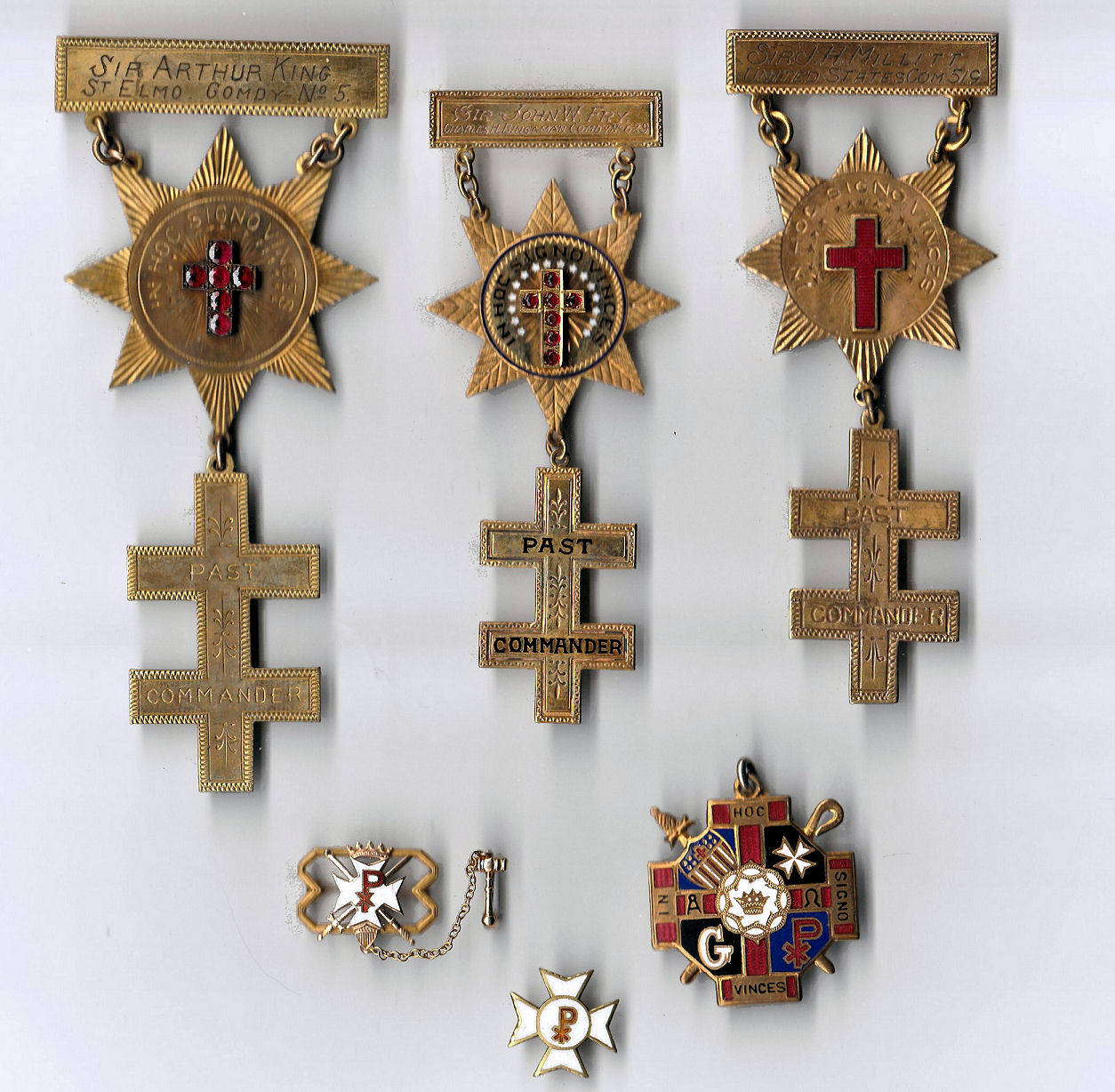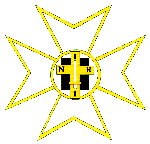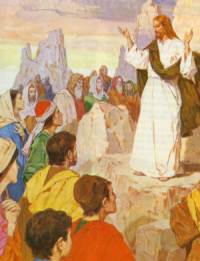Ancient Illustrious Order Knights of Malta, Dames of Malta


Order of the
Knights of Malta
The Eight-Pointed Cross (now
commonly known as the Maltese Cross) owes its origin to the Maritime Republic
of Amalfi, Italy, the birthplace of some pious merchants who founded the first
hospice in Jerusalem in 1048. It has ever since become the emblem of the
Knights Hospitaller.
The eight points symbolize the
eight Beatitudes (Mat III, 28), and also the eight Langues of the Order. The
four parts of the cross represent the four cardinal Virtues: Fortitude,
Justice, Temperance and Perseverance. It is a white cross reminiscent of
knightly purity - the knights made solemn vows before the cross, and to the
person it symbolized, Jesus Christ.
The Order of the Knights
Hospitalers of St John of Jerusalem was founded in Jerusalem in 1113 by
Brother Gerard, a Benedictine monk. The Order which was officially approved by
Pope Paschall II was formed principally to take care of the sick and provide
lodgings for pilgrims visiting the holy places of Jerusalem.
With the passage of time, the
Orders role spread into providing armed escort for pilgrims and eventually
into fighting the Muslims themselves when the order became a military order.
In 1187 Saladin captured
Jerusalem and the Knights were forced to leave. From there they transferred
their headquarters to Acre then on to Cyprus and finally to Rhodes which they
conquered after a two year battle in 1308. They remained there for about 200
years.
During their 200 year stay
in Rhodes they were constantly harassed by the Turks. The Knights became
expert seamen and pirates, and plied their trade against Turkish convoys and
merchantmen operating in the vicinity of Rhodes. The Order rapidly developed
into a great- sea-power in the Mediterranean.
While in Rhodes the Knights
founded a hospital, built the auberges, which pertained to different langues,
and fortified the island. The Turks could not ignore this Christian bastion on
their doorstep and in 1480 the Turks besieged Rhodes but did not succeed in
taking the island. It was at this time the the Order reorganized itself into
the eight Langues.
Again the Turks attacked and
following a 6-month siege by Soleyman's invasion force which consisted of 700
ships and 200,000 men, the knights were compelled to relinquish the island of
Rhodes on the 1st of January, 1523.
The knights soon started their
peregrinations in search of a new home. Provisionally they set up their
Convent in Viterbo. Subsequently, the Holy Roman Emperor, Charles V of Spain,
granted on fief the Maltese Islands together with Tripoli to the Order. The
islands were granted to them for the token payment of one falcon a year
(incidentally, this is where the legend of the Maltese Falcon began). Led by
the aging Grand Master Philippe Villiers de L'Isle Adam, on board the carrack Sant
Anna, they entered Malta's harbor, accompanied by 4,000 men of the Order
on the 26th October 1530. Malta's population was 12,000.
The Knights immediately began to
fortify the island. From Malta, and with the aide of the all ready pirate
employed Maltese, they continued to harass Turkish merchantmen. They were more
effective from Malta, because they were able to control shipping between
Africa and Turkey, as well as the East-West axis.
In August 1557, a Frenchman,
Jean Parisot de la Vallette was elected Grand Master at the age of 67. In
August of 1567 Sulieman the Magnificent, now an old man, decided to inflict a
decisive blow on Malta and the Knights, his mortal enemies. On receiving the
news, La Vallette continued to extend the islands fortifications and recalled
Knights from all over Europa, as well as began stockpiling adequate supplies
for the inevitable battle to come.
The siege began on the 18 of May
1565. It ended four months later in September when the utterly defeated
Turkish force withdrew back to Turkey.
The Order and the Maltese
enjoyed a "Golden Age" as the island prospered under the Orders
influence. The island was fortified even further, and its capital, Valletta
was considered an impregnable fortress. Each successive Grand Master continued
to build and add to the fortifications even further. A long period of peace
was enjoyed and the only "true" military action the Knights took
during this time (they continued their piracy) was at Lepanto, where the Order
contributed seven galleys to the battle.
By the eighteenth century,
however, the importance of the Order was greatly weakened. During the French
revolution in 1798 the Order suffered another heavy blow when the wealth of
the Order in France was confiscated by the revolutionary government. The
orders income was reduced to 1/6 of what it was.
In 1798, while Napoleon was on
his way to campaign in Egypt he landed in Malta under the pretext of obtaining
water and supplies. He then marched on to Valletta and presented an ultimatum
to the Knights demanding Grand Master Hompsech surrender. Hompsech faced by a
corrupt an unprepared Knighthood and insurrection from the Maltese decided to
surrender Valletta to Napoleon. What was considered Europa's best fortress was
conquered without a shot being fired. Napoleon pensioned off the Grand Master
and within four days the Knights had left the islands.
After Napoleon was defeated in
Egypt, the Maltese with the aide of the British successfully besieged the
French garrison in Valletta. Under the Treaty of Amiens, 1802, Malta was to be
returned to the Order. But pro-British demonstrations took place and Malta
eventually (voluntarily) joined the British Empire
The Order for effectively ceased
to exist. After 900 years the Order of St. John was no longer a Knighthood in
the true sense of the word. The Order still exists today in a symbolic
capacity, and has 300 members world wide. They also maintain an embassy at
their last and most glorious home - Valletta, Malta. The Knights of St John
are the worlds oldest Knighthood and the worlds third oldest religious order.

Conduct and
Vows
The Knights
had to take the following vows:
- Poverty
- Chastity
- Obedience
- Never to wage war against any other Christian
nation
- Never to gamble and incur debts
- Never to shrink from battle
- Never to lower the Order's flag
- Never retreat
- Never to surrender
- Never to ask for quarter
The Order took these vows very
seriously, as this incident illustrates;
In July 1570, while cruising in
the vicinity of Malta, heedless of the warning of the Trukish fleet lying
nearby, Chevalier Jean Francois de St. Clement was surprised by an
overwhelming force led by Lucciali, a Trukish general. Clement fled
ignominiously after losing three ships -the Capitana, the San
Giovanni and the Sant'Anna - only the Santa Maria della Vittoria
escaped capture. In the disaster that followed, eight knights and large number
of largely Maltese soldiers and sailors, perished.
A general outburst of
indignation ensued on the island, and on his return to Malta, St. Clement
barely escaped being lynched. He was tried, found guilty, and was stripped of
his habit. Condemned to death, he was strangled in prison, and his body,
enclosed in a sack filled with stones, was thrown into the sea a few miles
outside the Grand Harbor.

Organization
Membership of the Order was
divided into three main grades namely: Knights of Justice who were aristocrats
from all over Europa. They wore the eight pointed white cross on a black
background (now know as the Maltese Cross) on their chest.
The second grade was that of the
Conventual Chaplains who, although not necessarily of noble lineage, had still
to be of "respectable origins". They worked in the hospitals, the
churches, in the galleys and as clerks.
The third grade was that of
Sergeants at Arms. They served as soldiers and nurses and were recruited from
the common people.
The Knights were further grouped
into langues or "tongues". These were Provence, Auvergne, France,
Aragon, Castile, Italy, Germany and England. During the c16th after the
Reformation, the English arm ceased to exist as an effective force, as only a
few Knights stayed on disobeying their Protestant King. However a joint langue
of England and Bavaria was instituted in 1784.
The Order was governed by a
Grand Master who was elected by a council for life. All the members of the
Order owed allegiance only to him, and he in turn owed allegiance only to the
Pope. He also had absolute authority.

The Eight
Beatitudes

One day, Jesus Christ and his
friends climbed part of the way up a mountain and great crowds came to hear
what Jesus had to say. This "Sermon on the Mount" can be
found in the Bible: in the Gospel by Matthew Chapter Five, from Verse
Three to Verse Ten. During this sermon, Jesus told the crowds who the truly
happy people were. According to Jesus these were:
1. "Happy are these who know they are
Spiritually poor; for the kingdom of Heaven belongs to them!"
2. "Happy are these who mourn; for God will comfort them!"
3. "Happy are these who are humble; for they will receive what God has
promised!"
4. "Happy are these whose greatest deceive is to do what God requires;
for God will satisfy them fully!"
5. "Happy are these who are merciful to others; for God will be merciful
to them!"
6. "Happy are the pure in heart; for they will see God!"
7. "Happy are these who work for peace; for God will call them his
children!"
8. "Happy are these who are persecuted because they do what God requires;
for the kingdom of Heaven belongs to them!"

Ancient and Illustrious Order
Knights of Malta Rituals

